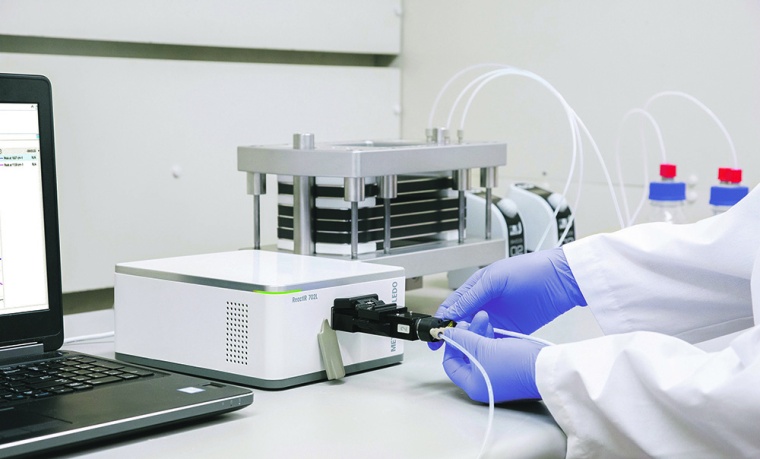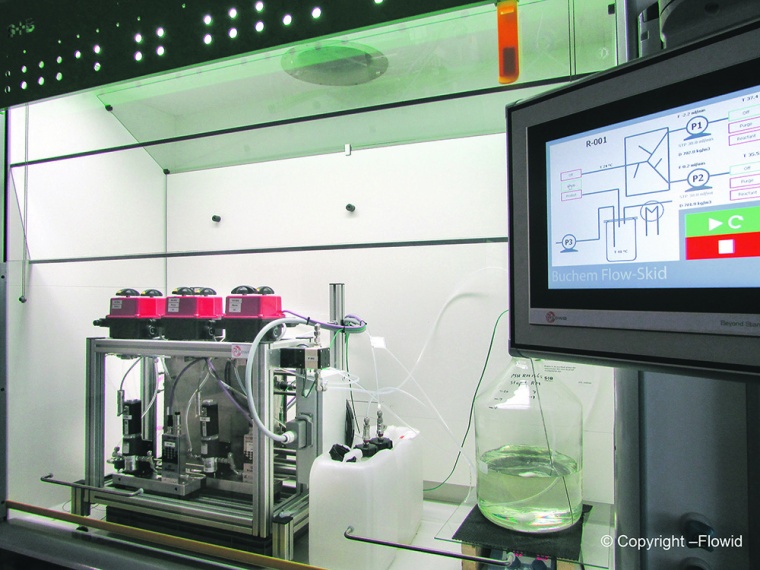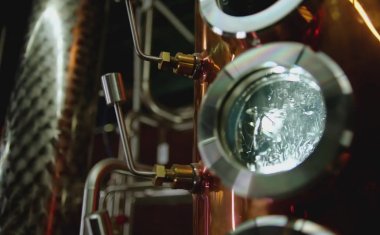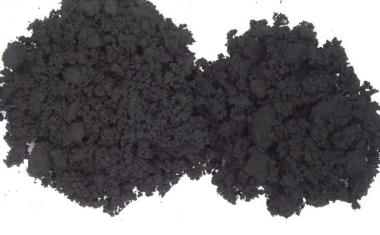Small, Modular Flow Plants
In 2020, the weakness associated with global chemical supply chains was highlighted in a dramatic manner as Covid-19 was designated a global pandemic. As a result, small modular continuous flow plants are gaining attention as an appropriate solution to secure supply chains whilst ensuring safe, sustainable processes are implemented.

Recent global events have highlighted the risks associated with the reliance on global chemical supply chains. As a result, an increasing number of countries are now actively bringing back the manufacture of critical raw materials, intermediates and products. After decades of outsourcing, local production infrastructure is often unavailable and needs to be re-established. Consequently, small modular continuous flow plants are gaining attention as an appropriate solution to secure these local supply chains whilst ensuring safe, sustainable processes are implemented.
The past decades have seen chemical production become an increasingly global activity, with APIs in particular becoming ‘world travelers’! Recently, changes in geopolitics and local environmental regulations have initiated numerous discussions on the risks associated with reliance on the outsourcing of critical raw materials and finished products. This has resulted in an increased number of production projects considering the use of alternative production techniques such as continuous manufacturing (CM).
In 2020, the weakness associated with global chemical supply chains was highlighted in a dramatic manner as Covid-19 was designated a global pandemic:
- Border closures and travel bans placed restrictions on the movement of goods and personnel
- Industry shutdowns were common in the worst hit areas, leading to short-term raw material shortages
- Transportation restrictions and customs backlogs resulted in significant tied-up inventory
Although the industry has responded positively and pulled together for the common good, when you consider the time needed to start-up raw material production, re-schedule intermediate manufacturing, perform the needed site inspections and move materials around the globe — the impact of 2020’s manufacturing restrictions will continue to be felt for months to come.
Whilst efforts towards strengthening local supply chains were in progress pre-2020, Covid-19 has un-doubtedly accelerated this at a country level, with evaluations now assessing the cost of reducing future risk vs. the cost of doing nothing!
Challenges of De-risking
There are many challenges associated with deglobalization and localization. Firstly, heavy reliance on outsourcing means that many countries do not have the infrastructure required to manufacture critical raw materials, intermediates and APIs at scale; secondly, there can be a local skills shortage.
Opportunities of De-risking
The ability to de-risk supply chains however brings opportunities for countries in that they can control locally material production and reduce the need to stockpile. By building in surge capacity for times of national crisis, processes can be operated close to ‘just in time’ manufacturing. The fact that existing infrastructure is not available gives the potential to use new technologies to deliver improved product quality, with a reduced environmental impact for example.
Where previously the drive was to realize the lowest landed cost and production in ‘someone else’s backyard’, current planning puts a known value on resilience and is driving the desire to have local manufacturing control. Key stakeholders in this on-going change will be governments and regulators who are targeting:
- Critical raw material access
- Faster responses to pandemics and natural disasters
- Faster supply of emerging therapies
- Efficient development of personalized / customized products
- Reduced environmental impact
In order to realize these goals, the regulatory and financial burden of change needs addressing!

Why Continuous Manufacturing?
Continuous Manufacturing (CM) is a technique that has been gaining global importance over the past decade as a result of improved process control and reduced operating costs, leading to increased manufacturing profits and a competitive edge. Recent years have shown that the reason for a company to change from ‘batch to flow’ have been varied, often depending on the sector, process type of interest and scale of operation. Supply chain security and improvements in process sustainability are strong emerging drivers for the adoption of CM.
With the product key, the infrastructure needed varies greatly and depends on the available chemistry, cost of goods, volumes required and the hazard profile of a transformation — as a result, no single solution fits all scenarios. The modularity and flexibility of continuous flow set-ups enables the development of small, agile production plants that can be used for the manufacture of multiple products — with easy re-configuration allowing for rapid product change-over.
Following on from this, the ease of replicating these small footprint systems represents an opportunity for manufacturers to develop a process and subsequently deliver production units across multiple countries to serve the local product demands. This is in stark contrast to the current approach of a single large-scale plant, with warehousing used to manage supply chain disruptions.
How to Address Appropriate Flexibility?
When thinking of a batch facility, flexibility is the word that first comes to mind — as such, manufacturers look for flexibility and future use when designing a CM facility. Flexibility can mean many things, it can be towards types of raw materials, products and/or transformations, together with production location and capacity.
Key to maximizing the benefit of a small, agile production unit is to stay simple and build in smart flexibility — avoid unnecessary complication or features that are unlikely to be used. We advise at the outset to look at developing functional modules, e.g. dosing, reaction, thermal control and isolation.
Then look to the types of processes that you want to perform — by clustering process requirements and chemical transformations you will see commonality in dosing / reaction / thermal / material of construction requirements. For example, cryogenic processes have different requirements to hydrogenations which have different demands to nitrations — but can all be performed using CM.
Work to define your operating philosophy since this will size your equipment. In CM, the volume of material produced is linked to the duration of operation — as a result, significant quantities of material can be produced from small footprint equipment with an intrinsically low hold-up volume. Consider if you need to manufacture your annual quantities of an agrochemical over 3 months in order to meet seasonal demands or can you produce your API steadily over 12 months? The former will require a larger reactor that is used for a short period of time, whilst the latter could be a small, dedicated unit that runs 24/7 throughout the year. Whichever approach is selected, don’t forget to build in surge capabilities: This can be done by starting up a parallel production train or by leaving a time buffer that allows additional material to be produced by running for a few days longer.
This way of working ensures that you define modules with achievable specifications, accessing the needed flexibility by freely combining different modules. With that said, should you have a very specific requirement, with a good basis, consider dedicating a small production line to that particular process – rather than compromising all other cases because of it!

Small, Agile Production Units
Recent global events will undoubtedly change the way that we manufacture fine and specialty chemicals, through to APIs with supply chain management favoring in-house local/distributed manufacturing models. By shifting from world plants to small, agile plants that serve different markets via replicated local facilities, companies can realize geographic diversification whilst countries gain the needed security of supply. In addition, this will significantly reduce the environmental burden associated with moving raw materials, intermediates and products between processing sites/countries. Reductions in CAPEX can be anticipated due to smaller-footprint installations and on-demand manufacturing will significantly reduce capital tied up currently in ‘work in progress’ material inventories.
For close to two decades, the US FDA and other regulatory bodies have encouraged the adoption of emerging technologies that aim to ensure high quality materials for patients and to mitigate against drug shortages. The release of ICH Q13 ‘Continuous Manufacturing for Drug Substances and Drug Products’ is anticipated within the year.
Covid-19 has changed the conversation! It is time to ask, what is the value of increased supply chain resilience vs. risk tolerance?
Author
Charlotte Wiles, CEO, Chemtrix, Echt, The Netherlands

















